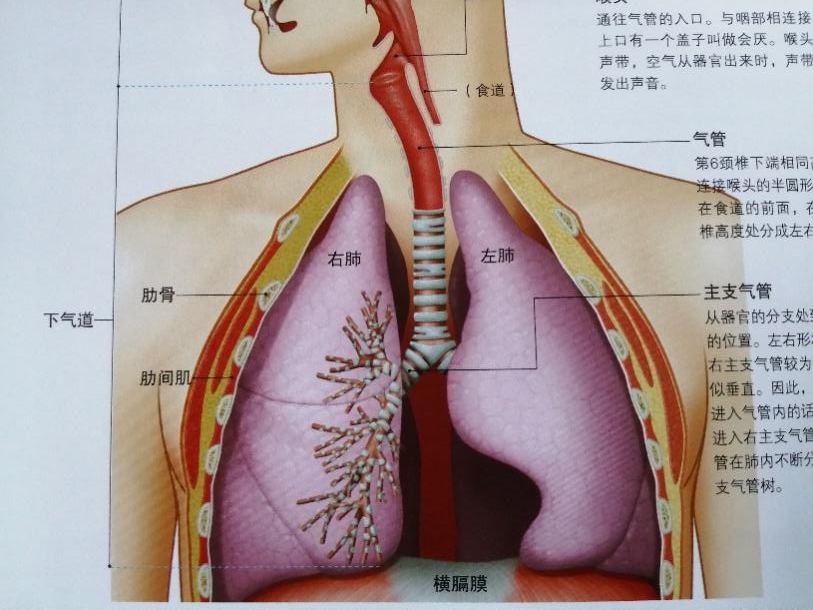
当前课程知识点:英语电影与文化 > Unit 12 The English Patient: Critical Analysis > Unit 12 The English Patient: Critical Analysis > Unit 9 Film and Ethnicity
Ann Marie Baldonado
Representation is a critical concept not only in postcolonial studies and academia, but in the larger cultural milieu. The term itself can be defined in many different ways. Often, we think of representation primarily as “presence” or “appearance” where there is an implied visual component. Representations can be clear images, material reproductions, performances and simulations. We understand them to be re-presenting a particular “real” thing; however, the relationship between the thing and the representation of the thing is one that has engaged philosophers, linguists, historians, and artists for centuries. In a different context, we use representation to denote the relationship between a politician and her/his constituency. A single person is endowed with the responsibility of representing many citizens; this is the foundational principle of representative democracy. For this discussion, we are highlighting the visual, political, and artistic elements of this concept.
Representations — these ‘likenesses’– come in various forms: films, television, photographs, paintings, advertisements, and other forms of popular culture. Written materials — academic texts, novels and other literature, journalistic pieces — are also important forms of representation. Yet how can simulations or “impressions on the sight” be completely true? How does one judge the accuracy or truth-content of a representation? Or rather, how does one interpret or read the representation? (See Essentialism) Edward Said, in his analysis of textual representations of the Orient in Orientalism, emphasizes the fact that representations can never be exactly realistic:
In any instance of at least written language, there is no such thing as a delivered presence, but a re-presence, or a representation. The value, efficacy, strength, apparent veracity of a written statement about the Orient therefore relies very little, and cannot instrumentally depend, on the Orient as such. On the contrary, the written statement is a presence to the reader by virtue of its having excluded, displaced, made supererogatory any such real thing as “the Orient.” (21)
Representations, then can never truly be real or objective. Instead, they are constructed images, images that need to be interrogated for their ideological content.
 The Post-Colonial Critic, 1990
The Post-Colonial Critic, 1990
In a similar way, Gayatri Chakravorty Spivak makes a distinction between Vertretung and Darstellung. The former she defines as “stepping in someone’s place … to tread in someone’s shoes (108).” Representation in this sense is “political representation” (108) or a speaking for the needs and desires of somebody or something. Darstellung is representation as re-presentation, “placing there” (108). Representing is thus “proxy and portrait (108)” according to Spivak. The complicity between “speaking for” and “portraying” must be kept in mind (108). She also addresses the problem of “speaking in the name of”: “It is not a solution, the idea of the disenfranchised speaking for themselves, or the radical critics speaking for them; this question of representation, self-representation, representing others, is a problem”(63). Spivak recommends “persistent critique” to guard against “constructing the Other simply as an object of knowledge, leaving out the real Others because of the ones who are getting access into public places due to these waves of benevolence and so on” (63).
If there is always an element of interpretation involved in representation, we must then note who may be doing the interpreting. Ella Shohat claims that we should constantly question representations:
Each filmic or academic utterance must be analyzed not only in terms of who represents but also in terms of who is being represented for what purpose, at which historical moment, for which location, using which strategies, and in what tone of address. (173)
This questioning is particularly important when the representation of the subaltern is involved. The problem does not rest solely with the fact that often marginalized groups do not hold the power over their own representations; it rests also in the fact that representations of these groups are both flawed and few in numbers. Shohat asserts that dominant groups need not preoccupy themselves too much with being adequately represented. There are so many different representations of dominant groups that negative images are seen as only part of the “natural diversity” of people. However, “representation of an underrepresented group is necessarily within the hermeneutics of domination, overcharged with allegorical significance” (170). The mass media tends to understand representations of the subaltern as allegorical, meaning that since representations of the marginalized are few, the few available are thought to be representative of all marginalized peoples (See Postcolonial Novel). The few images are thought to be typical, sometimes not only of members of a particular minority group, but of all minorities in general. It is assumed that subalterns can stand in for other subalterns. A prime example of this is the fact that actors of particular ethnic backgrounds are often cast as any ethnic “other.” Some examples include Carmen Mirandain in The Gang’s All Here (1943), Ricardo Mantalban in Sayonara (1957), Rudolph Valentino in The Son of the Sheik and Sarah Shahi in The L-Word. This collapsing of the image of the subaltern reflects not only ignorance but a lack of respect for the diversity within marginalized communities.
Shohat also suggests that representations in one sphere — the sphere of popular culture — affect the other spheres of representation, particularly the political one:
The denial of aesthetic representation to the subaltern has historically formed a corollary to the literal denial of economic, legal, and political representation. The struggle to ‘speak for oneself’ cannot be separated from a history of being spoken for, from the struggle to speak and be heard. (173)
It cannot be ignored that representations affect the ways in which individuals are perceived. Although many see representations as harmless likenesses, they do have a real effect on the world. We must ask what ideological work these representations accomplish. Both the scarcity and the importance of minority representations yield what many have called the burden of representation. Since there are so few images, negative ones can have devastating affects on the real lives of marginalized people. We must also ask, if there are so few, who will produce them? Who will be the representative voice of the subaltern? Given the allegorical character of these representations, subaltern writers, artists, and scholars are also asking who can really speak for whom? When a spokesperson or a certain image is read as metonymic, representation becomes more difficult and dangerous.
Solutions for this conundrum are difficult to theorize. We can call for increased self-representation or the inclusion of more individuals from marginalized groups in the act of representing, yet this is easier said then done. Also, the inclusion of more minorities in representation will not necessarily alter the structural or institutional barriers that prevent equal participation for all in representation. Focusing on whether or not images are negative or positive, leaves intact a reliance on the realness of images, a realness that is false to begin with.
This brings us again to Spivak and her famous question, ‘”Can the Subaltern Speak.” In this seminal essay, Spivak emphasizes the fact that representation is a type of speech act, with a speaker and a listener. Often, the subaltern makes an attempt at self-representation or perhaps a representation that falls outside the “the lines laid down by the official institutional structures of representation” (306). Yet, this act of representation is not heard because it is not recognized by the listener, perhaps because it does not fit in with what is expected of the representation. Therefore, representation by subaltern individuals seems nearly impossible. However many artists and activists who are committed to critical political and cultural resistance still work to challenge status quo representation and the ideological work it does, despite the structural failure of such subaltern speech.
In the senses discussed, representations are ideological tools that can serve to reinforce systems of inequality and subordination and sustain colonialist or neocolonialist projects. A great amount of effort is needed to dislodge dominant modes of representation and subvert and challenge hegemonic ideologies. Self-representation may not be a complete possibility, yet is still an important goal.
Bibliography
· Shohat, Ella. “The Struggle over Representation: Casting, Coalitions, and the Politics of Identification.” Late Imperial Culture. Eds. Roman de la Campa, E. Ann Kaplan and Michael Sprinkler. New York: Verso, 1995. Print.
· Spivak, Gayatri Chakravorty. The Post-Colonial Critic: Interviews, Strategies, Dialogues. Ed. Sarah Harasym. New York: Routledge, 1990. Print.
· —”Can the Subaltern Speak.” Marxism and the Interpretation of Culture. C. Nelson and L. Grossberg, eds. Basingstoke: Macmillan Education, 1988. 271-313. Print.
From https://scholarblogs.emory.edu/postcolonialstudies/2014/06/21/representation/ 2021-1-25
-1.1 Overview
--Video
-1.2 Mise-en-scène: setting
--Video
-1.3 Mise-en-scène: lighting
--Video
-1.4 Mise-en-scène: character appearance
--Video
-1.5 Mise-en-scène: performance
--Video
-1.6 Screen space and composition
--Video
-1.7 Case study
--Video
-Unit1 Questions for discussion
-Unit 1 单元测试
-2.1 Introduction of cinematography
--Video
-2.2 Cinematography: angle of framing
--Video
-2.3 Cinematography: camera distance
--Video
-2.4 Cinematography: mobile framing
--Video
-2.5 Case study
--Video
-Unit 2 Questions for discussion
-Unit 2 单元测试
-3.1 Overview
--Video
-3.2 Openings, closings, and story development
--Video
-3.3 Range of story information: restricted or unrestricted
--Video
-Unit 3 Questions for discussion
-Unit 3 单元测试
-4.1 Overview
--Video
-4.2 Editing and speed of narrative
--Video
-4.3 Chronology and continuity editing
--Video
-4.4 Flashbacks and editing
--Video
-Unit 4 Questions for Discussion
-Unit 4 单元测试
-5.1 Overview
--Video
-5.2 What is semiotics?
--Video
-5.3 Christian Metz
--Video
-5.4 Roland Barthes (Part 1)
--Video
-5.5 Roland Barthes (Part 2)
--Video
-5.6 Case study: 2001: A Space Odyssey
--Video
-Unit 5 Questions for Discussion
-Unit 5 单元测试
-6.1 Overview
--Video
-6.2 Origins of film ideology
--Video
-6.3 Media and technology
--Video
-6.4 Cultural hegemony and counterhegemony
--Video
-6.5 Case study: Star Trek
--Video
-Unit 6 Questions for discussion
-Unit 6 单元测试
-7.1 Overview
--Video
-7.2 Woman and film
--Video
-7.3 Feminist film theory and practice
--Video
-7.4 Case study: Three Billboards Outside Ebbing, Missouri
--Video
-7.5 Masculinity
--Video
-7.6 Queer Cinema
--Video
-Unit 7 Questions for discussion
-Unit 7 单元测试
-8.1 Overview
--Video
-8.2 Race and racism
--Video
-8.3 Stereotypes of racial representation
--Video
-8.4 Whiteness
--Video
-8.5 Case study: Rabbit-Proof Fence
--Video
-Unit 8 Questions for discussion
-Unit 8 单元测试
-9.1 Overview
--Video
-9.2 Edward Said and Orientalism
--Video
-9.3 Cultural Imperialism
--Video
-9.4 Self-orientation
--Video
-9.5 Case study I: Mulan
--Video
-9.6 Case study II: M Butterfly
--Video
-Unit 9 Questions for discussion
-Unit 9 单元测试
-10.1 Overview
--Video
-10.2 Early Background
--Video
-10.3 Jacques Lacan
--Video
-10.4 Laura Mulvey
--Video
-10.5 Case Study: Shutter Island
--Video
-Unit 10 Questions for discussion
-Unit 10 单元测试
-Unit 10 Film and Psychoanalysis
-11.1 Overview
--Video
-11.2 Story
--Video
-11.3 Character: the enigmatic English patient
--Video
-11.4 Mise-en-scène: setting
--Video
-11.5 Narrative
--Video
-11.6 Music
--Video
-Unit 11 Questions for discussion
-Unit 11 单元测试
-Unit 11 The English Patient: Form and Narrative
-12.1 Signs and Symbols
--Video
-12.2 Nationalism in The English Patient
--Video
-12.3 Almasy as the misogynist and Katharine as a feminist
--Video
-12.4 Kip as the Other
--Video
-Unit 12 Questions for discussion
-Unit 12 单元测试



